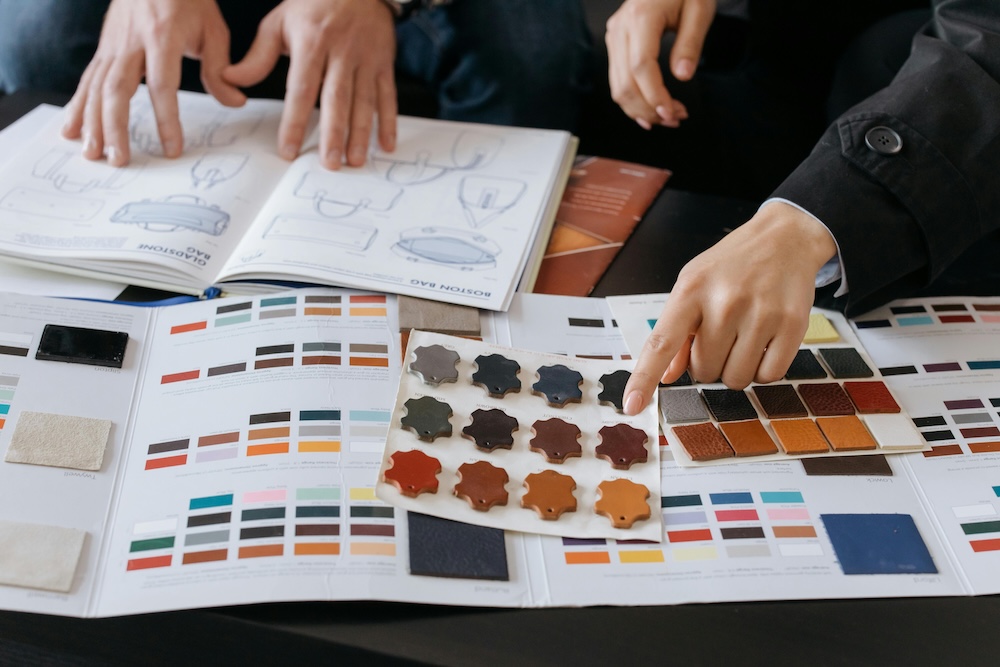Eco design is a proactive approach to product development that prioritizes environmental sustainability throughout a product's life cycle. However, integrating eco design principles can be complex and resource-intensive. CarbonBright’s AI-powered platform changes this by embedding dynamic Life Cycle Assessments (LCAs) directly into the design process. Instead of static, one-off studies, CarbonBright delivers real-time, data-driven insights that evolve as designs change. This enables designers and engineers to make informed decisions early and often—optimizing materials, reducing impacts, and ensuring compliance with global standards—without slowing down innovation.
What Is Eco Design?
Eco design, or sustainable design, involves creating products with a minimal environmental impact by considering factors such as resource use, energy consumption, emissions, and end-of-life disposal. The challenge is that traditional LCAs are slow, costly, and static. A product design may evolve multiple times before launch, yet LCA results often lag weeks behind.
CarbonBright addresses this by making LCAs dynamic: environmental impacts are recalculated instantly as materials, suppliers, or design parameters change. This transforms eco design from a reactive compliance exercise into an integrated, iterative design practice.
The Importance of Eco Design
As consumers, investors, and policy makers continue to have heightened environmental awareness and regulatory scrutiny, companies are increasingly held accountable for the environmental impacts of their products. Eco design offers a strategic pathway to:
- Reduce Environmental Footprint: Minimize resource use and emissions throughout the product life cycle. For example, switching from virgin plastic to recycled plastic can reduce impact from raw material extraction and processing.
- Enhance Compliance: Meet stringent environmental regulations and standards. The Ecodesign Directive for Sustainable Products (ESPR) in the EU requires sustainable design, impact transparency, Extended Producer Responsibility (EPR), and more.
- Drive Innovation: Foster the development of products that align with sustainability goals. Innovative products like mushroom based packaging that’s compostable, concentrated refill cleaning products, and seaweed based plastics are a few examples of innovation that’s changing the game.
- Improve Market Position: Appeal to eco-conscious consumers and stakeholders. A study by NielsenIQ in 2023 found 78% of US consumers prioritize sustainable lifestyles.
By integrating eco design into product development, organizations can achieve long-term sustainability and competitive advantage.
How CarbonBright Facilitates Eco Design
CarbonBright's platform leverages artificial intelligence to streamline and enhance the eco design process:
Dynamic Life Cycle Assessments (LCAs)
CarbonBright transforms LCAs from static reports into dynamic analysis. As designers adjust materials, processes, or suppliers, the platform instantly recalculates impacts. This dynamic capability makes sustainability an integral part of the iterative design process—enabling eco design decisions in hours rather than months.
Optimized Material Selection
The platform analyzes the environmental impact of various materials, assisting designers in selecting the most sustainable options without compromising on quality. CarbonBright can compare the impact of various materials and ingredients, highlighting trade-offs in recyclability, emissions, and cost.
Scenario Modeling
CarbonBright allows users to model different design scenarios, assessing the potential environmental outcomes of various choices. Powered by dynamic LCAs, users can instantly compare different product pathways (e.g., recycled vs. virgin plastic, regional sourcing vs. offshore)This capability supports informed decision-making and identifies opportunities for impact reduction.
Regulatory Compliance and Reporting
The platform ensures that product designs comply with global sustainability standards and regulations, generating necessary documentation and reports to facilitate certification processes.
Certification Alignment
Environmental certifications are becoming increasingly important as consumers become more conscious of the negative environmental impact of their purchasing decisions. Certifications and eco-labels allow customers to identify products that align with their personal goals and values. CarbonBright’s platform provides automated reports that align with certifications to help companies comply easier and faster. Certifications like ISO 21930 / EN 15804, Cradle to Cradle, BIFMA Level, and more all have different requirements.
Supply Chain Transparency
CarbonBright provides visibility into the environmental impacts of supply chain activities, enabling organizations to collaborate with suppliers to reduce overall product footprints. Supply chains often have the largest negative environmental impact and are known to be complex, making it one of the biggest roadblocks to understanding impacts and taking actions to reduce them. CarbonBright allows companies to fill in data gaps where suppliers are unable to provide impact data and understand how they can increase the efficiency and sustainability of their supply chain. A 2021 report by the CDP found on average, GHG emissions are 11.4 times as high as operational emissions.
Business Benefits of Integrating CarbonBright in Eco Design
Implementing CarbonBright in the eco design process offers several advantages:
- Efficiency Gains: Automate complex assessments and analyses, saving time and resources.
- Cost Savings: Identify cost-effective materials and design alternatives that do not compromise sustainability.
- Enhanced Product Quality: Ensure that environmental considerations are integrated into product development without sacrificing performance.
- Risk Mitigation: Stay ahead of regulatory changes and market demands by maintaining compliance and transparency.
- Market Differentiation: Strengthen brand reputation by demonstrating a commitment to sustainability. A 2022 study by IBM found on average, 59% of consumers paid a premium on products branded as more sustainable or socially responsible.
Key Takeaways
CarbonBright transforms eco design from a burdensome requirement into a powerful business strategy by embedding dynamic LCAs at the heart of product development.. Instead of waiting for static assessments, organizations gain continuous, real-time visibility into environmental impacts. This empowers organizations to:
- Develop environmentally sustainable products faster and more efficiently.
- Achieve compliance with evolving global standards.
- Reduce costs through smarter material and design decisions.
- Strengthen brand reputation and gain competitive advantage in a sustainability-driven market.
Incorporating CarbonBright into the eco design process enables organizations to move beyond incremental improvements and achieve holistic sustainability—delivering products that are not only eco-friendly but also economically viable and aligned with consumer expectations.
Frequently Asked Questions (FAQ)
1. What is eco design and why is it important?
Eco design is the practice of creating products with minimal environmental impact across their entire life cycle. It helps companies reduce emissions, comply with regulations, and meet growing consumer demand for sustainable products.
2. How does a Life Cycle Assessment (LCA) support eco design?
LCAs measure the environmental footprint of a product from raw materials to disposal. In eco design, LCAs highlight environmental “hotspots” so designers can make better decisions about materials, processes, and packaging.
3. What are the challenges of using LCAs in product design?
Traditional LCAs are complex, time-consuming, and expensive. They are often static snapshots, making it difficult to evaluate multiple design alternatives during fast-moving product development cycles.
4. How can eco design decisions be made more dynamic and data-driven?
By automating and digitizing LCAs, designers can instantly see how changes in materials, suppliers, or processes affect a product’s footprint. This makes sustainability part of everyday design iterations instead of an afterthought.
5. What are the business benefits of integrating eco design early in product development?
Companies gain faster innovation cycles, reduced costs from smarter material choices, stronger compliance with global regulations, and increased market appeal as consumers increasingly prefer sustainable products.




